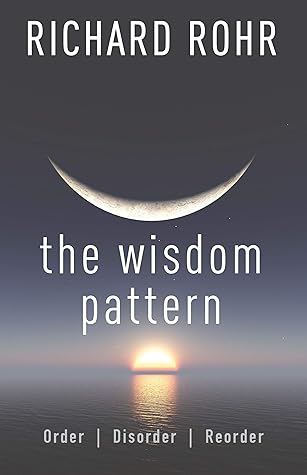More on this book
Community
Kindle Notes & Highlights
Jesus is turning our common worldviews upside-down.
He is giving us a different story line for the understanding of what reality means. This change of story lines, this switch of plots, is at the foundation of all true conversions and, therefore, of all genuine reconstruction.
Most of us do not see things as they are; we see things as we are.
contemplation. It’s the way of going to the experience of the absolute without going toward ideology.
The God-image, the self-image, and the world-image are deeply connected. Normally, when one of them changes, the other two have to readjust.
Don’t write it down until it is a felt experience.
Only the True Self can rest. The false self is inherently restless.
Our operative world-image is finally our “realm,” that which is real for us and becomes the organizing principle that situates our daily decisions, lifestyle choices, and ultimate sense of direction and significance. It tends to grow, but also is founded in very early and largely non-rational teachings, at our mother’s knee and by our father’s example.
“In the soul’s journey to God we must present to ourselves the whole material world as the first mirror through which we may pass over to the Supreme [Artisan].”
“If humankind could have known God without the world, God would never have created the world.”
The Divine Indwelling, subject to our whimsical seeing, seems to dwell nowhere except in temples of our choosing.
If we dishonor the so-called inferior or unworthy members of creation, we finally destroy ourselves too. Once we stop seeing, we stop seeing.
Like nothing else, spiritual transformation is an all-or-nothing proposition.
For those given sight by the gospel, there is only one world—God’s world—and it is all supernatural! We may no longer divide the world into sacred and profane fanum and profanum).
we had best come to the telescope and microscope with our shoes off, ready to live the emptiness of not knowing. Maybe
forgiveness is probably the only human action that reveals three goodnesses simultaneously! When we forgive, we choose the goodness of the other over their faults, we experience God’s goodness flowing through ourselves, and we also experience our own goodness in a way that surprises us.
In forgiveness, we live up to our truest dignity. We operate by a power not our own. We live out of the True Self and not just the tiny self that is always offended and complaining.
analogical imagination.
Forgiveness is the great thawing of all logic, reason, and worthiness. It is a melting into the mystery of God as unearned love, unmerited grace, the humility and powerlessness of a Divine Lover. Forgiveness is the beginning, the middle, and the end of the whole gospel, as far as I can see.
Without radical and rule-breaking forgiveness—received and given—there will be no reconstruction of anything.
It is almost always fear that justifies hatred, but a fear that is hardly ever recognized as such.
To be trapped inside of our small ego is always to be afraid.
fear is too destabilizing and unsettling for the small self to bear alone, so it must either be denied or projected elsewhere.
That which we fear, deny, and avoid will, with one hundred percent certainty, be projected somewhere else. In other words, there is an intrinsic connection between fear, hatred, and violence.
As Aquinas noted, no one intentionally does evil. They have to explain it to themselves as good!
Religion is, ironically, the safest place to hide from God!
It is only the mystics and seers in all of the great religions who give us a genuinely new story: redemptive suffering instead of redemptive violence.
The absolute religious genius of Jesus is that he utterly refuses all debt codes, purity codes, religious quarantines, and the searching for sinners.
There is no redemptive violence. There is only redemptive suffering.
God.ow
the cross tells us that there is a cruciform pattern to all reality, a collision of cross-purposes,
Simplicity will clearly have to be part of any kind of reconstruction. Any rebuilding must move toward a more modest sense of self.
The only pain it suffers is longing for God and absence from God. It is only the false self that suffers and takes offense. Hopefully those sufferings lead us to collapse back into the True Self. The false self is necessarily insecure and always hurt.
Virtue is not one isolated value, but a relationship between several values.
The best ally of God is reality—not theology, not ideology, not what should be as much as what is.
We should be the protectors of mystery, not the explainers of it.
For us as Christians, the highest value should always be love. If we’re going to accept the Judeo-Christian heritage as meaningful and authoritative in any way, we have to admit that love comes first and last.
17). a
shore.Western
civilization has failed to learn how to carry the shadow side. We did not evangelize through our living icon, Jesus. Instead, we developed a system involving winners and losers, which is not Jesus.
All of us, it seems, are trying to find ways to avoid the mystery in human life, instead of learning how to carry it patiently, as our humble Jesus did.


